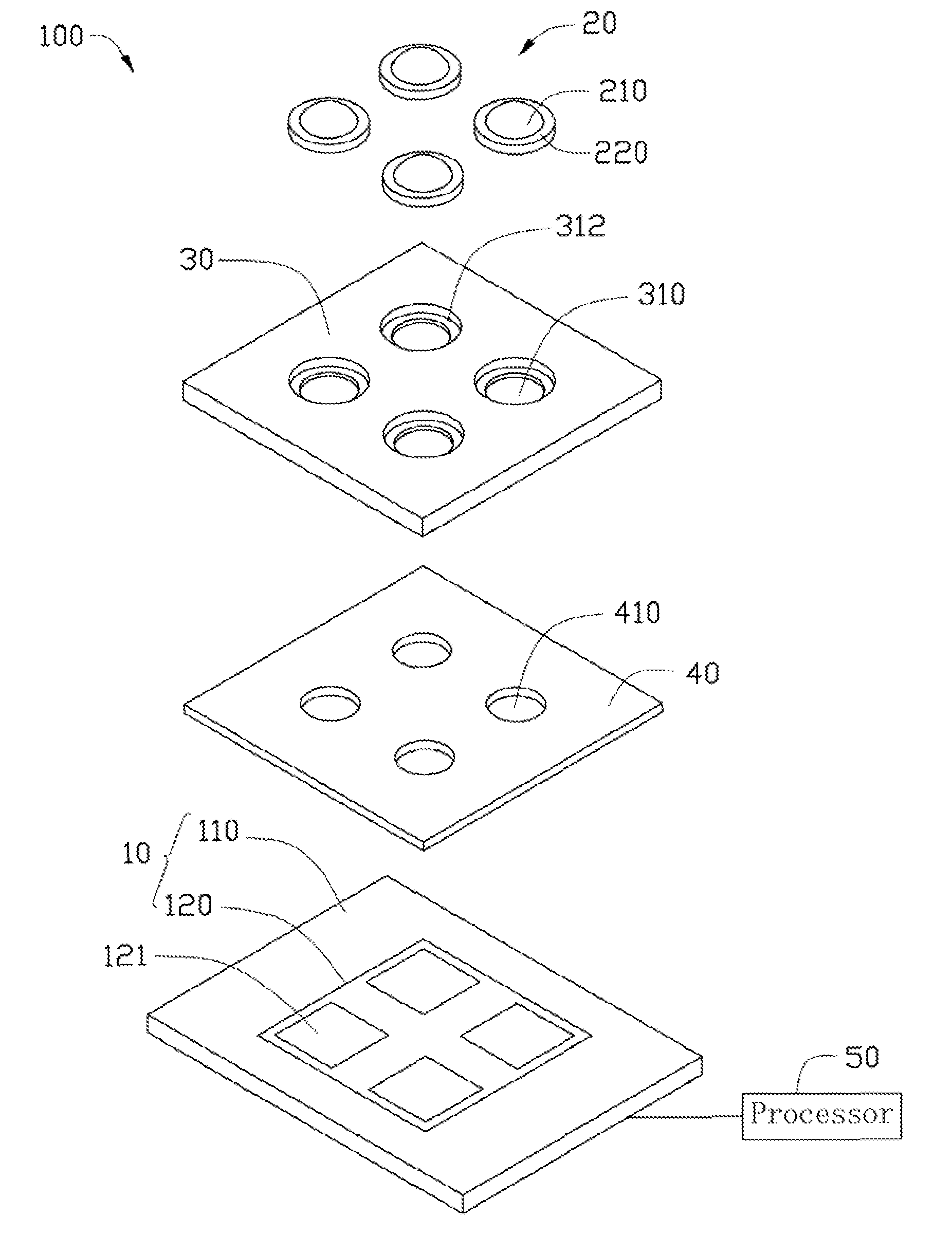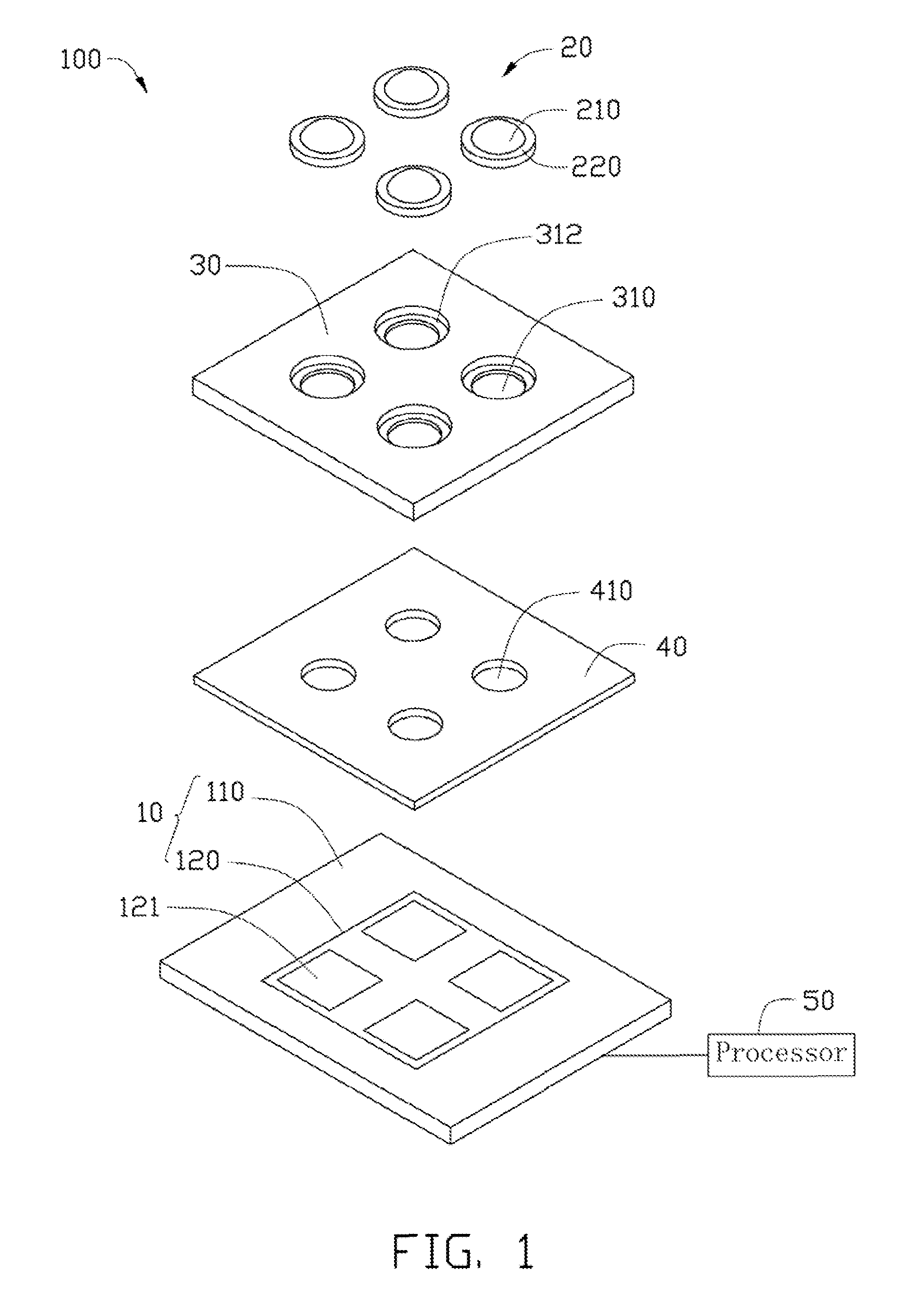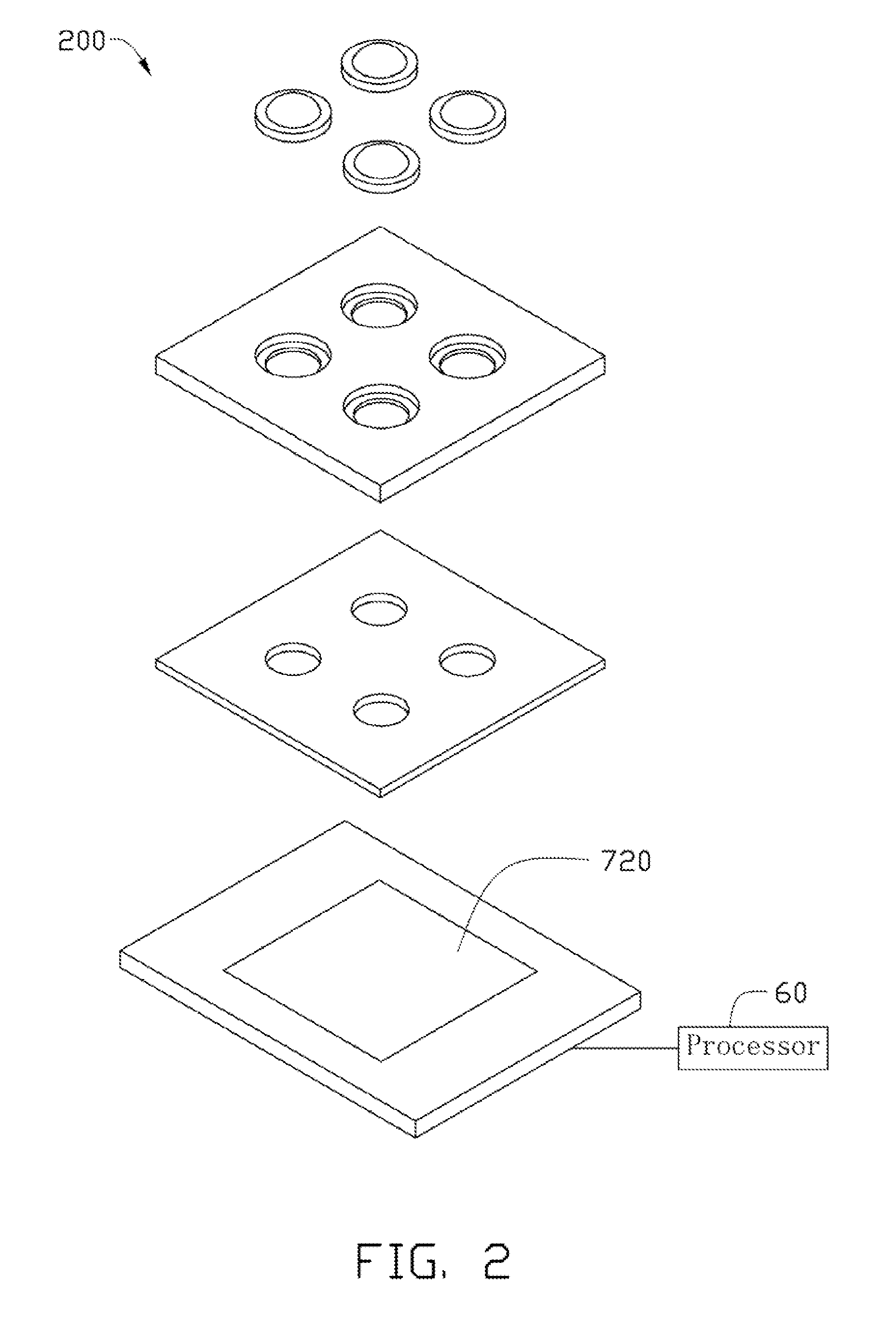Compact camera module with lens array
a camera module and lens array technology, applied in the field of camera modules, can solve the problem that the thickness of the camera module tends to increase in the optical axis direction
- Summary
- Abstract
- Description
- Claims
- Application Information
AI Technical Summary
Benefits of technology
Problems solved by technology
Method used
Image
Examples
Embodiment Construction
[0008]Referring to FIG. 1, a camera module 100, according to a first exemplary embodiment, includes an image sensor 10, four lenses 20, a supporting plate 30, a spacer 40, and a processor 50. In this embodiment, the four lenses 20 are arranged in a rectangular array on a common plane.
[0009]The image sensor 10 is selected from the group consisting of a complementary metal oxide semiconductor (CMOS) image sensor and a charge coupled device (CCD) image sensor. The image sensor 10 includes a base 110 and a sensing area / region 120 in the center of the base 110 (i.e., centered upon the base 110). The sensing area / region 120 includes a plurality of sensing portions 121. In this embodiment, there are four sensing portions 121, and the four sensing portions 121 are arranged in a rectangular array corresponding to the lenses 20.
[0010]Each lens 20 may be made of glass or resin and can be an aspherical lens or a spherical lens for example. The lenses 20 have at least two different focal lengths...
PUM
 Login to View More
Login to View More Abstract
Description
Claims
Application Information
 Login to View More
Login to View More - R&D
- Intellectual Property
- Life Sciences
- Materials
- Tech Scout
- Unparalleled Data Quality
- Higher Quality Content
- 60% Fewer Hallucinations
Browse by: Latest US Patents, China's latest patents, Technical Efficacy Thesaurus, Application Domain, Technology Topic, Popular Technical Reports.
© 2025 PatSnap. All rights reserved.Legal|Privacy policy|Modern Slavery Act Transparency Statement|Sitemap|About US| Contact US: help@patsnap.com



